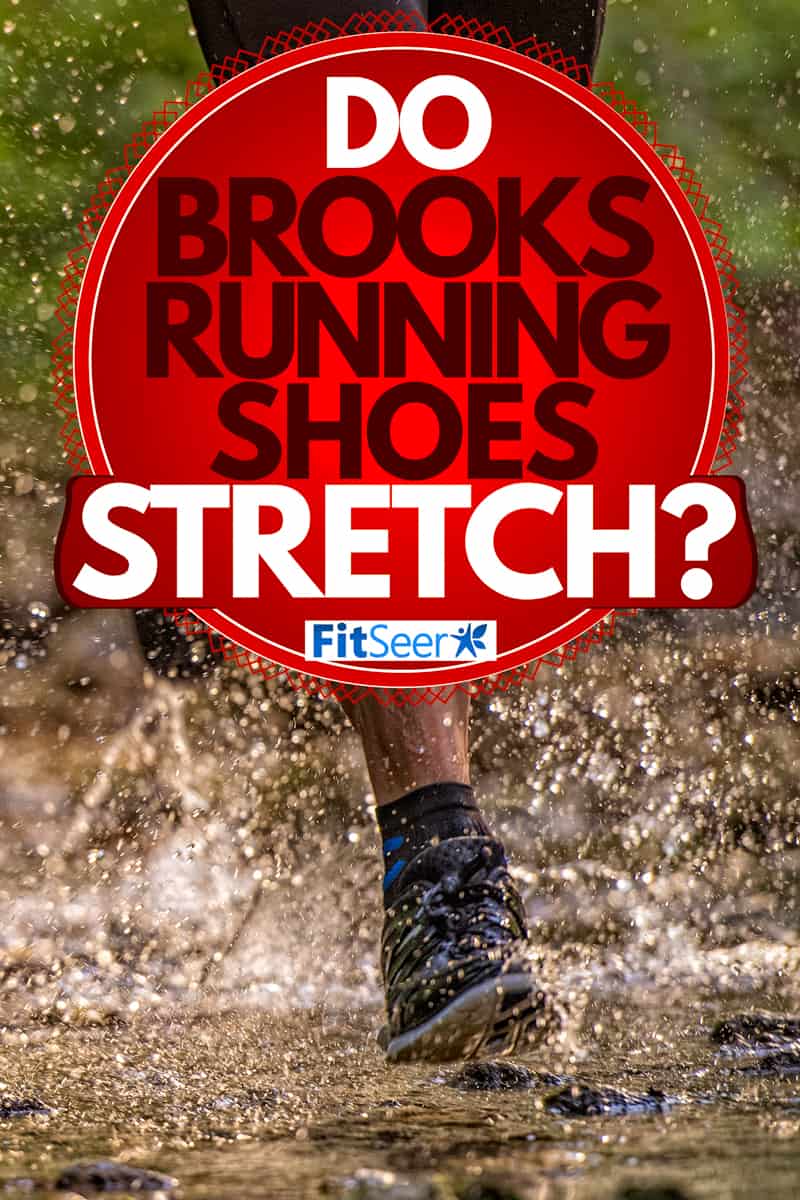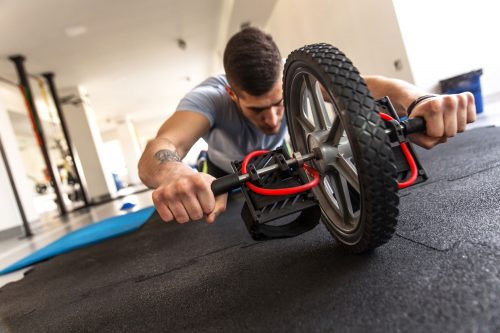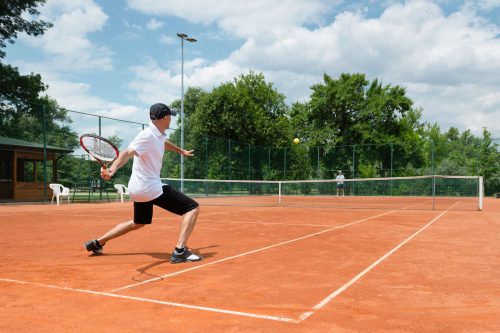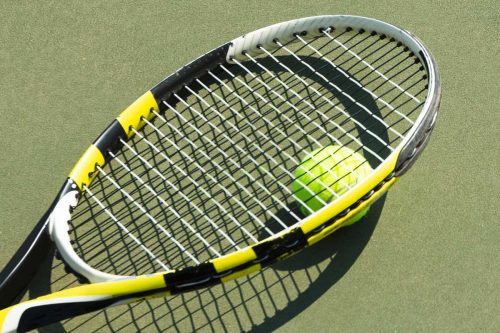As a dedicated runner, you, in all likelihood, have an unspoken appreciation for running footwear. The shoes that we buy and how they fit will unquestioningly dictate the quality and comfort of our runs. Well-fitted running shoes are an essential tool in our ever-present struggle to avoiding sports-related injuries. If you were looking to change up your shoes and were planning on buying a pair of Brooks, you may have several questions you need to be answered before pulling the trigger. One of those may be whether or not Brooks running shoes stretch. We have researched these questions and have found your answers.
Brooks running shoes do not stretch, but as is common with all running shoes, they will lose their shape and naturally wear down over time.
Runners on your mark. Get set... and let's delve into the details about these running shoes.

Find The Right Before Fixing The Wrong
We can take a couple of steps before we start concerning ourselves with breaking in or stretching out our Brooks running shoes. This will start and ideally end with the purchase of the right footwear. It is important to stress the fact that the purpose of "breaking in" shoes is to address potential issues with well-fitted shoes, not to manipulate problems of poorly fitted shoes.
Regardless, if you are a newly indoctrinated runner or a battle-hardened veteran runner, it's highly recommended to visit a specialized running shop before committing to any pair of shoes. If you purchase a pair of shoes online or in your local megachain sports department store, you are forgoing the involvement and valuable expertise of well informed and educated runners who can help guide your purchasing decision. If you go to a specialty running shop, you are given the opportunity to be measured, video assessed, advised, checked, and even test out different shoe models with a friendly accomodating return policy. Runners know Runners.
Brooks Running Shoes
If you are buying a pair of running shoes, there is a good chance you're going to choose a pair of Brooks. That is for an excellent reason. A tremendous amount of ingenuity and detail goes into the fabrication of the shoes. The technology that has gone into the shoe's supports, not to mention the cushioning and materials used in all their products, are top of the line. With the quality and standard set so high, runners prefer to know what to expect long-term with this particular selection. The good news is that these shoes are built to last.
Case and point, the Brooks Ghost 13. This shoe, the 13th iteration of the model, encapsulates all that you can come to expect from Brooks. This particular shoe is among the top-rated 2020 lineup of running shoes and has earned 8 Editors Choice awards due to its notable versatility. If you choose to continue using Brooks footwear, you can rely on the fact that the Ghost model will remain true to its core.
The Ghost 13
For more products like this, visit Amazon.com.
How To Break In Our Shoes?
If we have our shoes properly measured and fitted, there should not be a significant break-in period to speak of. In reality, there is very little of the conventional "breaking in" taking place. As was mentioned earlier, the goal is always to correct well-fitted shoes, not break in poor-fitting shoes. Arguably, "breaking in" shoes nowadays is more an act of tweaking and adjusting based on subtle changes in form and feet. In any event, they are accomplished in a three-stage process.
Walk-In Them
When you get a new pair of running shoes, you shouldn't immediately attempt to hit long-distance PR's. Walking for a couple of days in the new pair gives your feet time to adjust. There are discernable subtleties to be felt in the new shoe mold and cushioning. It also ensures more sweeping adjustments to your footwear aren't necessary. If they are uncomfortable during that period of walking, they certainly won't be during running.
Run On Treadmill
You'll obviously be tempted to hit the pavement hard when you slide on those comfy new shoes of yours. It is best to integrate the shoes into use in increments slowly. With that in mind, we should do well to remember that we shouldn't ever be waiting until our shoes are tearing at the seams before replacing them.
If possible, try and run on a treadmill. Running on a treadmill lets you try out the footwear and have a better opportunity to exchange if necessary. Refund policies tend to require that shoes not be worn outside. Using the treadmill is easy on the shoes and, therefore, the best test experience you can get.
Routine Run
Phasing your shoes into your routine is possible after they passed the walk and treadmill tests. Depending on how frequently you run, you should aim to alternate between the new and old pair for a few weeks. In practice, if you run four days a week, phase in the new shoes, only two of the days. After a few weeks of this, the new shoes will be fully formed to feet and your daily runner. In three to six months, you'll be repeating this cycle. If you take care of your shoes and keep them clean, the longer you can stretch the investments. Running shoe cleaning equipment is relatively inexpensive and goes a long way to aiding your running performance.
Clean Kicks Shoe Wipes
For more products like this, visit Amazon.com.
Are Running Shoes Supposed To Be Tight?
The fit of our running shoe ultimately depends on the type of running we are doing. A properly fit running shoe will be snugger in the heel with more wiggle room and space movement in the toe cap. There is a "right" tight and a "wrong" tight, so there are a few helpful strategies and tips we can follow when trying to size ourselves correctly.
Running Shoe Sizing And Fit Tips
Measure Your Feet Each Year
Your foot size will likely change each year slightly. The arch in your feet may lower, causing your feet to elongate, which obviously will impact the size. Conversely, an increase in strength in your feet may cause the arch in your foot to rise, thus shortening your foot. Fluctuations in weight could also impact the size of your foot. These are all important things to monitor that will impact the feel of our footwear.
Brannock Foot Measures
For more products like this, visit Amazon.com.
Fit Your Feet (Mismatched Sizing)
It is entirely possible that you do not have symmetrical feet. It is quite normal for runners to wear two completely different sizes to accommodate their feet, with either left or right shoe being up to a full size different. In these instances, a specialty run shop is better capable of providing you with the appropriate pairing of footwear.
Pace And Speed Needs
If you are looking to pick up the pace in your runs, your footwear should be slightly smaller. A tighter or more snug shoe means your shoes will adhere to your feet better, meaning you can increase your overall speed and pace performances. Racing and more performance-driven running shoe models will have a tighter fit than everyday training runners, so be mindful of that when looking to buy a new pair of shoes.
Do Brooks Running Shoes Run Big Or Small?
Compared to other running shoe brands, Brooks tends to run smaller by a half size measurement. Given that information, when buying Brooks, you should probably buy the shoes in half or full size larger than what you would buy for casual shoewear. For any other sizing questions or if you need further assistance in selecting a pair of Brooks footwear, visit Brooks Sizing Support.
Do Running Shoes Shrink?
Running shoes will not shrink when used under standard conditions. The only situation where shrinking would be possible is cleaning your shoes against manufacturer recommendations, i.e., drying to a dryer or using a hairdryer to air out shoes.
How Many Miles Should I Put On My Running Shoes?
Shoes, regardless of their quality, all wear down. The expert recommendation is to replace your shoes at approximately every 300-500 miles. That breaks down to every four to six months if you are regularly running double digits. Other variables, such as where and how you run, will definitely factor into your desired frequency to change shoes. Brands nowadays are forthcoming with their brand-specific recommendations on mileage. Be sure to look into the product descriptions as helpful information is certainly provided within.
In Closing
It's important to keep your runs carefree and comfortable every time. Rest assured, if you take care of your Brooks, they will certainly take care of you.
For more tips and advice, follow our Fitseer guides.









